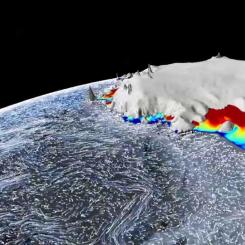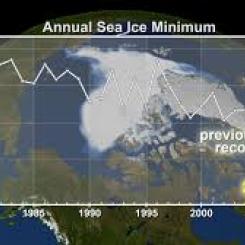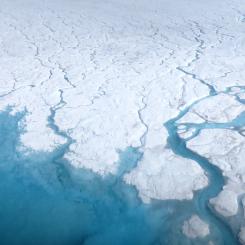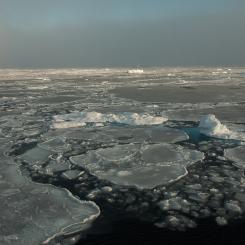Mini Lesson/Activity
Seasonal Sea and Land Ice Melt
Overview
Students examine the two time series images to determine the differences between seasonal ice melt over water versus land.
Student Directions
Examine the two time series images to determine the differences between seasonal ice melt over water versus land. Read the information at the top of each graph and answer the following questions.
Note:
- This quantity measures the percent coverage of snow and ice in each pixel, including snow, land ice, and sea ice.
- UNITS: This quantity is a measure of area coverage. A 30 percent coverage value means that snow and ice cover 30 percent of the land area at that location over the entire area of the grid box.
The first image shows the ice over the water.
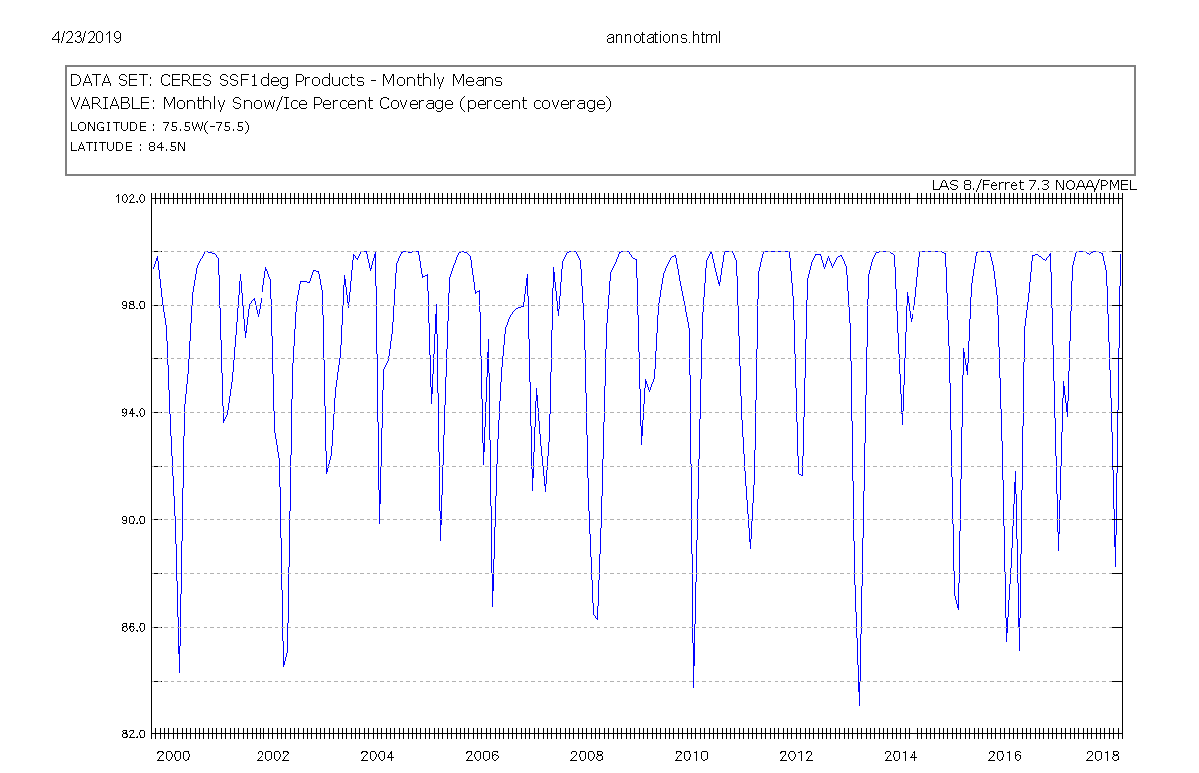
The second image shows the ice over land.
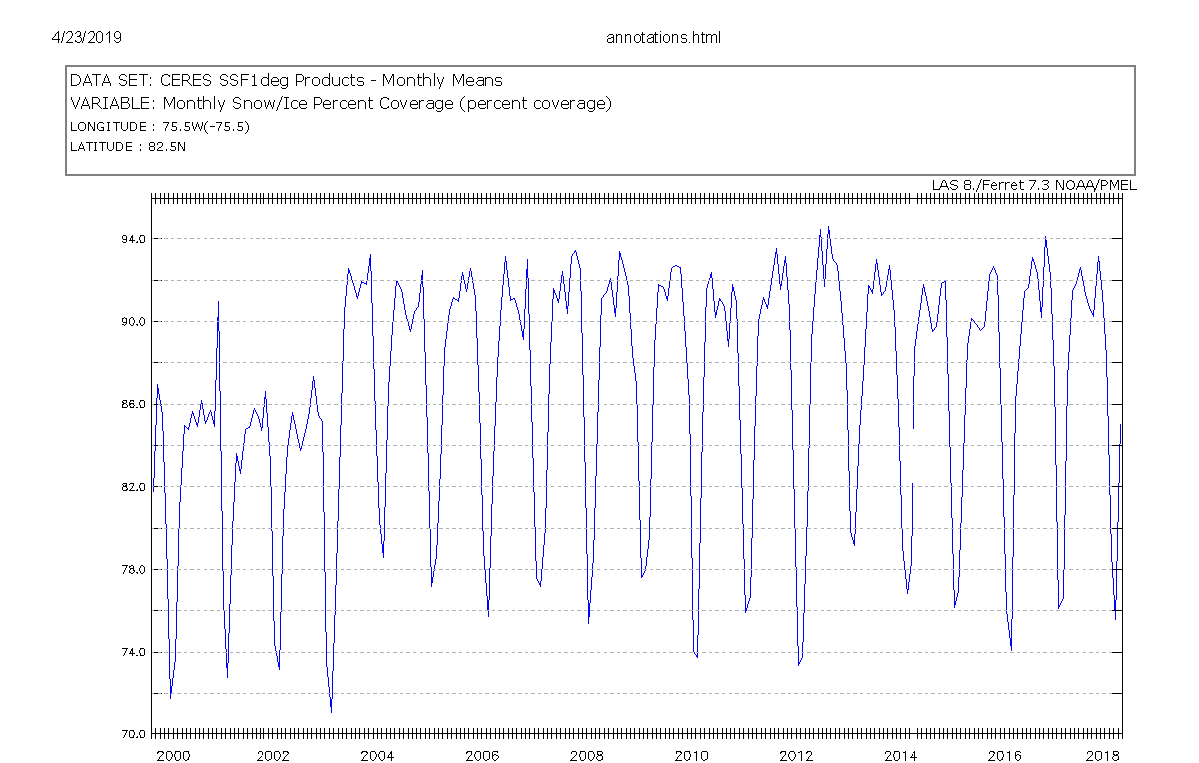
Steps:
- Check with your instructor on how to submit your answers.
- What do these graphs show?
- What variable is on the horizontal axis?
- What variable is on the vertical axis?
- What is the maximum value for the vertical axis?
- What pattern do you see for the sea ice?
- What pattern do you see for the land ice?
- What are the differences?
Source:
- LAS UI. (n.d.). My NASA Data. Retrieved October 25, 2022, from https://mynasadata.larc.nasa.gov/EarthSystemLAS/UI.vm#panelHeaderHidden…
Teacher Note
Teachers, these mini lessons/student activities are perfect "warm up" tasks that can be used as a hook, bell ringer, exit slip, etc. They take less than a class period to complete. Learn more on the "My NASA Data What are Mini Lessons?" page.
Teachers who are interested in receiving the answer key, please complete the Teacher Key Request and Verification Form. We verify that requestors are teachers prior to sending access to the answer keys as we’ve had many students try to pass as teachers to gain access.
Disciplinary Core Ideas:
- ESS2A: Earth Materials and Systems
- ESS3A: Natural Resources
Crosscutting Concepts:
- Patterns
Science and Engineering Practices:
- Developing and Using Models
- Analyzing and Interpreting Data

